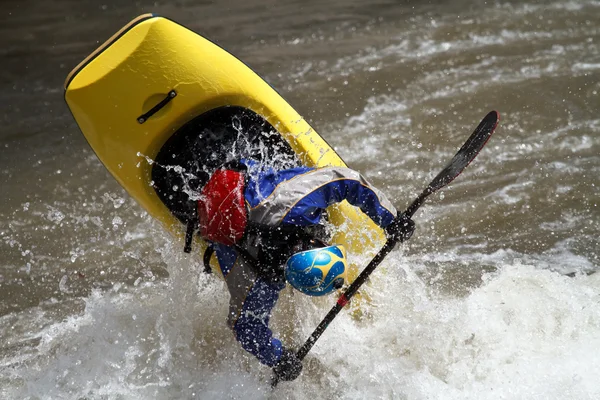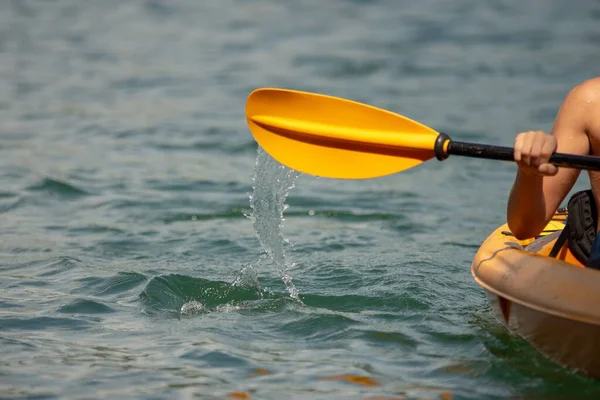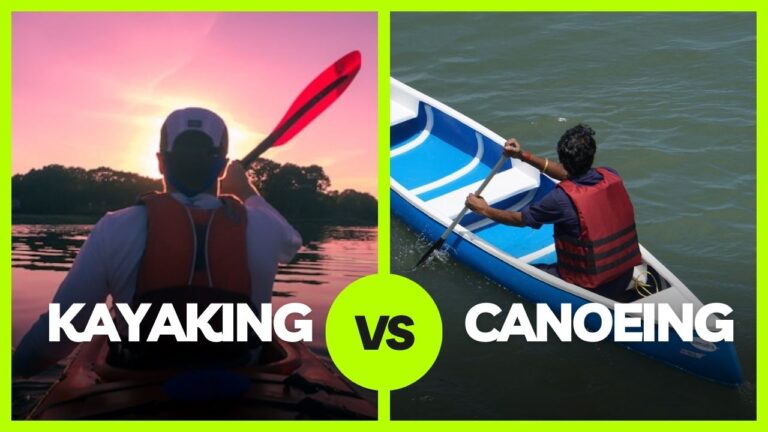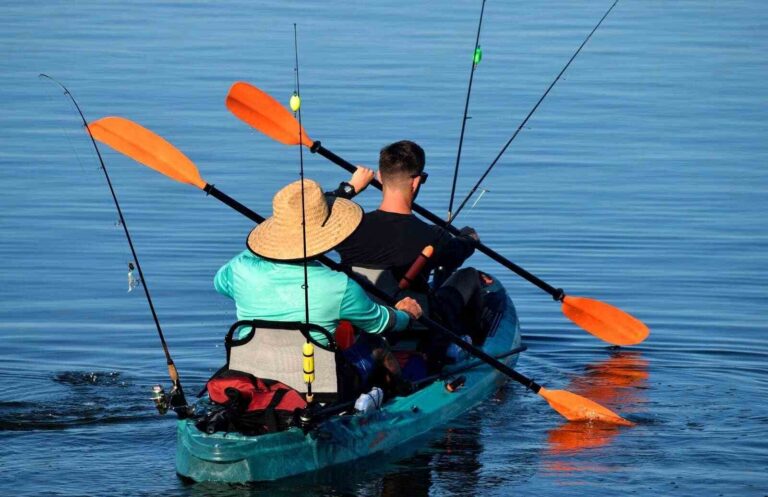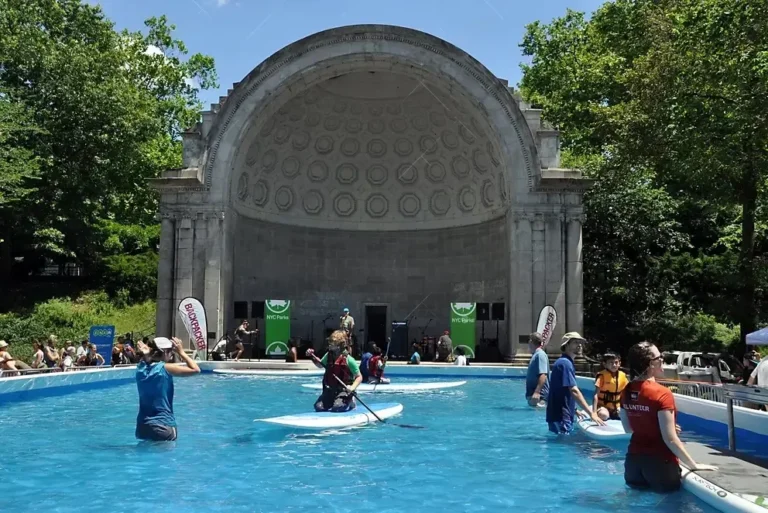Can a Kayak Sink? A Comprehensive Guide
Have you ever had that moment of panic where you think, “Uh oh, can a kayak actually sink?”
I know I have, especially when I was starting out! It’s a good question, cause you gotta stay safe out there, right?
Here’s the thing about kayaks:
- They’re not like the Titanic (thankfully!). If you get too much water inside or way overload it, yeah, it could go down.
- But it’s not super common. Most kayaks are built kinda tough, meant to handle some splashing and stuff.
- The kind you use matters. Those sit-on-tops are harder to sink than the ones where you’re tucked inside.
Quick tips to avoid a swim:
- Don’t be a packrat – know your kayak’s weight limit.
- Check those hatches are sealed good!
- Got those weird holes called scuppers? Figure out how they work.
So there ya go! Kayaking’s awesome, and knowing this stuff helps you chill and enjoy the ride. (Way less chance of an unexpected bath!)
Can a Kayak Sink if it Fills with Water?
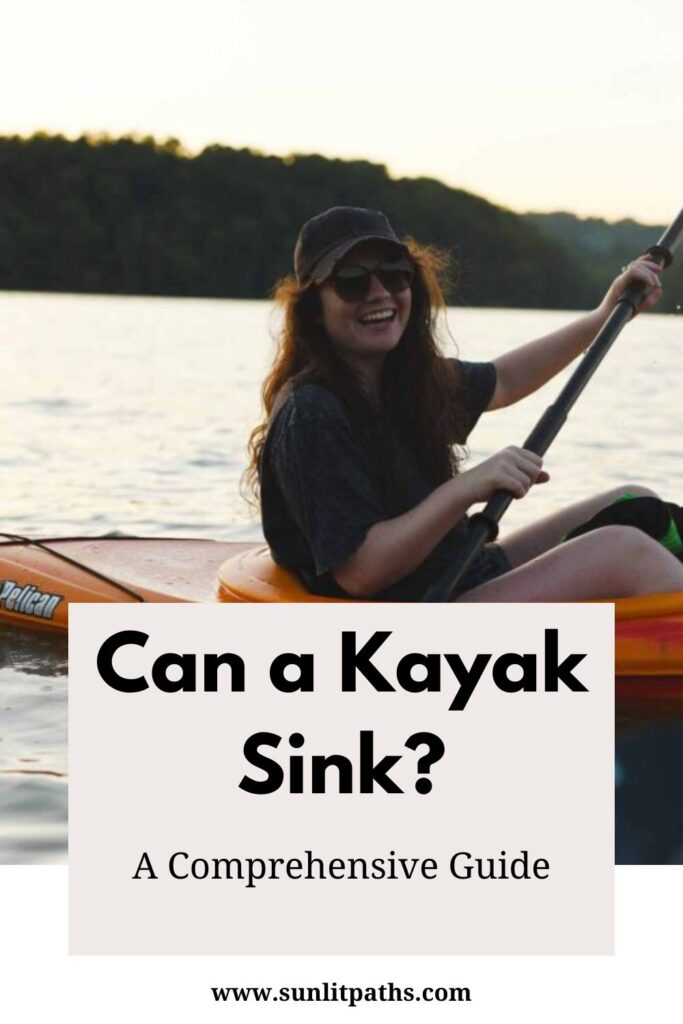
Okay, let’s be honest. If you’re a kayaker, you’ve probably wondered at least once: ‘Wait, if this thing fills up, am I going down with it?’ Totally normal to worry about!
The answer kinda depends on a few things:
- What kind of kayak are we talking about? Those sit-on-tops? Hard to sink, even if they get swamped. They’re designed to kinda push the water away, keeps ’em floaty.
- Sit-inside kayaks are trickier. That closed-up space means water can get trapped easier. If it gets full, it gets heavy, harder to paddle… but it won’t usually go down right away.
- Where you’re sitting matters too! Lean too far back, the front of your kayak pops up, and good luck keeping it steady.
See, it’s not just “yes” or “no” on the sinking thing. But knowing this stuff helps you plan better and paddle safer!
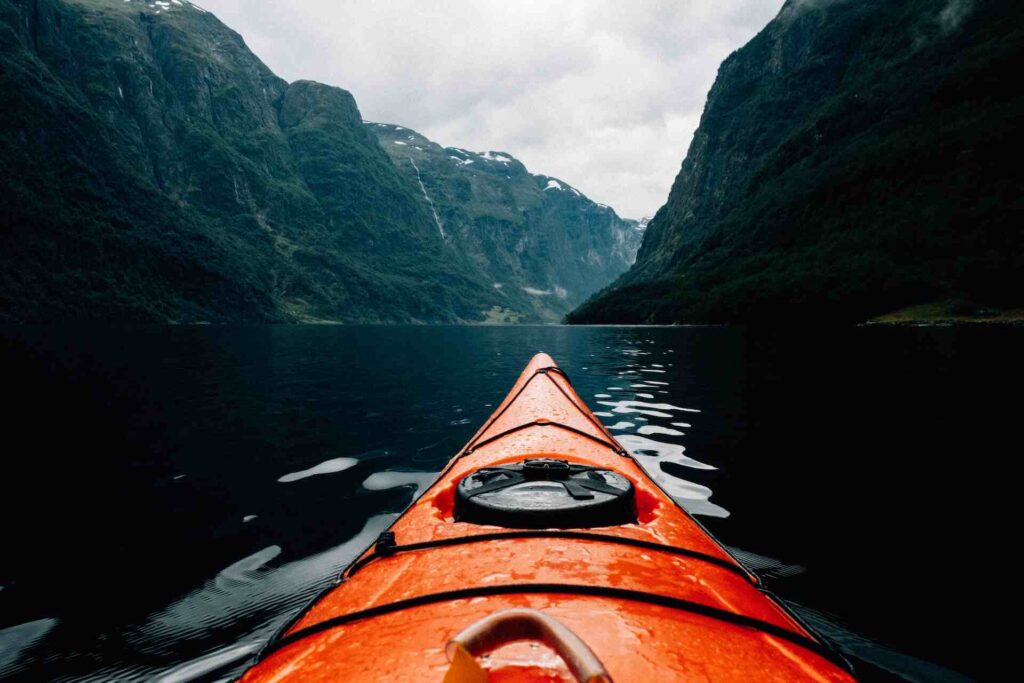
One wrong move, and whoosh – you’re tipped over and your kayak’s filling up fast! Gotta keep that weight balanced, right? It’s all about where your center of gravity is.
Okay, so worst-case scenario – your kayak’s swamped. Don’t freak out! Stay calm, stay put for a sec, and you’ll usually be okay. Once things are stable, then the bailing-out starts.
Got a fancy bilge pump? Great. If not, empty water bottle works in a pinch! Just get scooping.
Bottom line: Can a full kayak totally sink? Not super likely, but hey, weird stuff happens. Depends on the kayak, how much extra stuff you got on board… and how fast you can get that water out!
Related:
- ESSENTIAL KAYAKING SAFETY TIPS FOR ALL
- KAYAKING SAFETY: THE IMPORTANCE OF WEARING A LIFE JACKET
- HOW TO RECOVER FROM A KAYAK CAPSIZE AND RE-ENTER THE KAYAK?
- IMPACT OF WEATHER CONDITIONS ON KAYAK SAFETY
How to Handle a Kayak if it Fills with Water
Okay, so your kayak’s taking on water…what do you do?
- Chill out (seriously). Panicking just makes things worse. Keep your weight even, don’t rock the boat!
- Get bailing! Bilge pump is best if you’ve got one. No pump? Hands, water bottle, whatever you can use to scoop that water out.
- Feeling wobbly? Head for the shore or shallow water where it’s easier to deal with everything.
That’s the basics! By staying calm and following these steps, you can handle a leaky kayak situation.
What Happens if a Kayak Flips?
So, you’re new to kayaking and that image of a flipped kayak pops into your head… ‘Am I going under with it?’ It’s okay, everyone worries about that!
Good news: Kayaks themselves won’t just sink if they flip. Buuuut, here’s the thing – they get a lot easier to fill up with water when they’re upside down. That can make ’em tricky to handle afterwards.
Even experienced paddlers flip sometimes! Stuff happens, waves get weird… it’s part of the adventure. The important thing is knowing what to do!
Why a Flipped Kayak Won’t Sink
Okay, let’s talk about why those kayaks are such stubborn floaters. It’s all about trapped air (think of a beach ball underwater) and some clever design.
Most kayaks have enough air stuck inside that even when they do the upside-down turtle thing, they won’t sink. Plus, they’re built sorta wide and flat-bottomed, which is great for staying balanced, even when things get wonky.
So, a flipped kayak? More of a pain in the butt than a Titanic re-run. It’ll just bob there upside down, waiting for you to get it sorted again.
What to Do if Your Kayak Flips
Okay, you’ve flipped. Now what?
- Chill for a sec. Don’t freak out, just hang onto your kayak and take a couple of deep breaths. You got this.
- Flip it back! Grab one side of the kayak, and push down hard on the opposite side. It’s kinda like a big seesaw.
- Still stuck? No worries. Swim your kayak towards the shore or where the water’s shallower. Easier to flip it there.
- Back in business! Once your kayak’s right-side-up, climb back in and keep on paddling.
Extra Tips:
- Buddy system rules. Paddling with friends? They can help get everything sorted super fast.
- Safety first, always. Taking a kayak lesson beforehand teaches you all these flips and tricks in a relaxed setting.
Preventative Measures to Avoid Flipping
Okay, flipping your kayak can be a splash, but it’s usually more of a hassle than anything. Here’s how to stay right-side up:
- Get the right ride. Pick a kayak that matches how much you weigh and how experienced you are. A wobbly kayak is no fun!
- It’s all about balance. Load your kayak evenly, and chill out when you’re paddling. Sudden moves make things tippy.
- Read the water. Waves, choppy days – that means you gotta change how you paddle a bit to stay steady.
- Practice makes perfect. Start out on super calm water to get the hang of your kayak before trying anything crazy.
Flipping happens sometimes, but following these tips makes it a lot less likely! That means more time for paddling and less time swimming.
Can Different Types of Kayaks Sink?
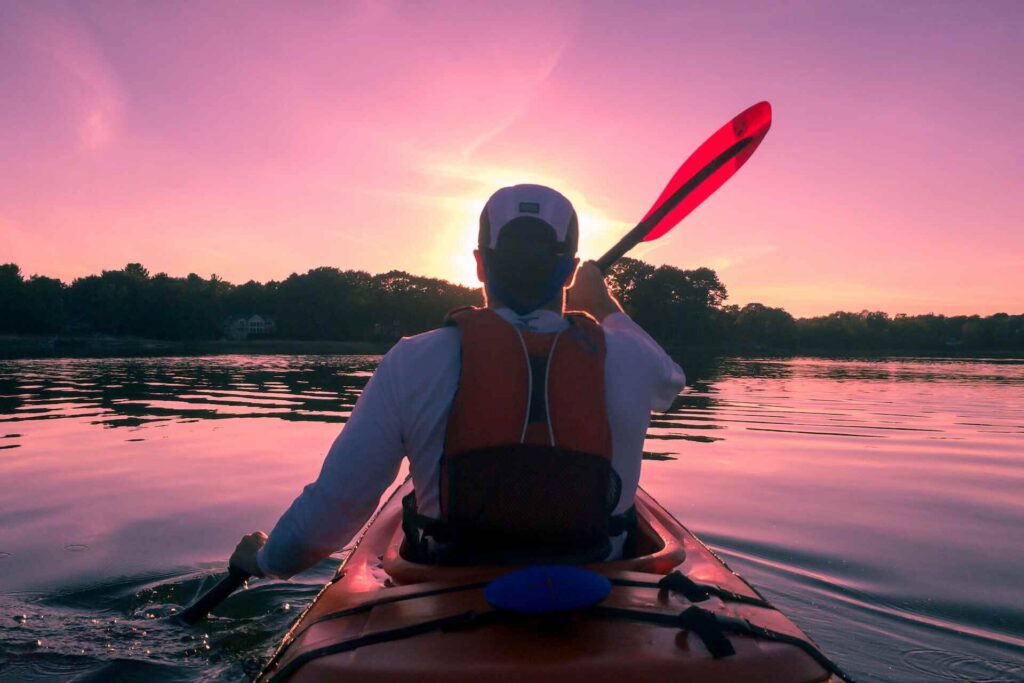
Okay, sit-on-top vs. sit-inside kayaks: Which is more likely to sink?”
Short answer: Both could sink, but it’s all about how you use them.
Sit-inside kayaks:
- They’ve got that little cockpit where you tuck your legs in. Seems safer, right? But if they fill up, that water gets heavy and they can tip over.
- Good news: They’re designed to keep some water out, and a lot have spray skirts that seal you in even better.
Sit-on-top Kayaks:
- These are more open, so scooping up water is easier. If one of these gets swamped, it can feel like it’s going down.
- Buuuut – they’ve got those clever little holes called scuppers. These drain water as you paddle!
- Important: If a sit-on-top doesn’t have scupper plugs (to close the holes), and it gets totally underwater… yeah, that’s a sinker.
Bottom line: Both types can be totally safe if you know your kayak and use the right gear. It’s more about you than the boat!
Do Scupper Plugs Prevent Kayak Sinking?
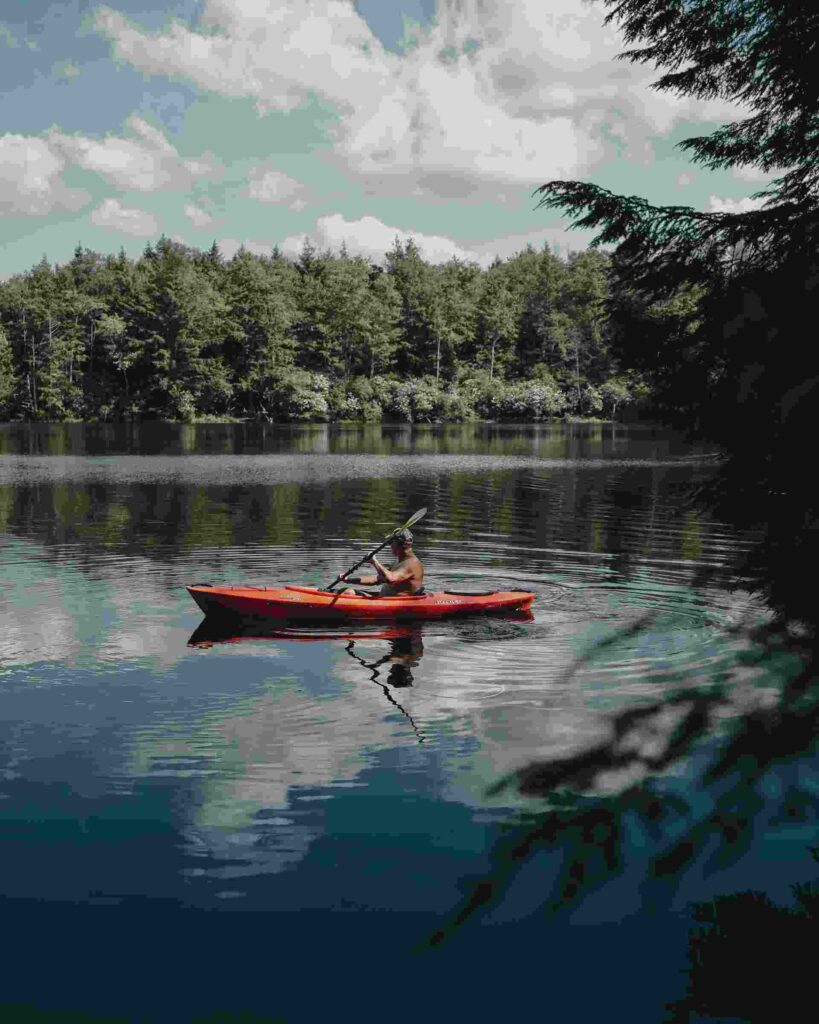
Okay, what the heck are scupper plugs and do I need to panic if I lose one?
Picture those little holes in sit-on-top kayaks. Scupper plugs are like little corks that you pop in to keep water from splashing up into your kayak.
But will my kayak sink without them? Not necessarily, but it depends. Here’s the deal:
- Scupper plugs DO help. They make your kayak lighter to handle when it’s not half-full of water.
- They’re not magic. Plugs can pop out or get lost. Some paddlers even take them OUT on purpose in choppy water for faster drainage.
- Not every kayak needs them. Sit-inside kayaks? Totally different design, no scupper holes to worry about.
So, why are scupper plugs good?
- Smoother ride: Less water sloshing around means a steadier kayak.
- Dry butt = happy paddler: Let’s be honest, nobody wants a soggy seat.
Bottom line: Scupper plugs are your friends, but it’s smart to be prepared either way. Bilge pump to bail out water, a flotation bag for extra buoyancy… these are all good backup plans!
How to Prevent Your Kayak from Sinking
How to Keep Your Kayak Afloat (And Yourself Dry) 😉
Nobody wants a sinking kayak – it’s a hassle and can get a bit scary. Here’s how to minimize the risk:
1. Get the Right Ride
- Choose a kayak that’s the right size and type for you. If you’re new, wider kayaks are steadier and harder to tip.
2. Bilge Pump = Your New Best Friend
- This little hand pump lets you get rid of water that splashes in. Practice using it beforehand so you’re not fumblin’ around in a panic.
3. Flotation Bladders for Backup
- Think of these like water wings for your kayak. You blow ’em up and stick ’em in the front and back. Makes it way harder to totally sink.
4. Spray Skirt Keeps You Dry
- This stretches around your waist and the kayak’s opening. Stops most waves from soaking you and filling up the boat.
5. The Fancy Move: Learn to Eskimo Roll
- Okay, this is advanced stuff, but if you get flipped, this lets you get the kayak upright without even gettin’ out. Takes practice, but super useful!
Key Thing: It’s all about bein’ prepared. The right stuff and a bit of practice make kayaking way safer and way more fun!
Essential Kayak Safety Tips
Look, accidents happen, but being prepared makes ’em a whole lot less scary. Here’s the most important safety stuff when it comes to kayaking:
- Chill out (Seriously) If something goes sideways, panicking only makes it worse. Take a deep breath, think for a second, then figure out what you gotta do.
- Life Vest = Non-Negotiable Doesn’t matter if you’re an Olympic swimmer, life vests are a MUST when kayaking. Stuff happens you can’t control, and it’s way better to be safe than sorry.
- Know Your Limits Start with easy water, learn how to handle your kayak, THEN get into tougher stuff. Pushing yourself too hard is how most accidents happen.
- Dress For the Dip, Not the Day Even warm days can mean cold water. That water will zap your energy FAST. Layers, special suits – talk to someone who knows about staying warm in your area.
- Buddy System for the Win Paddling with friends is safer AND more fun! If you gotta go solo, tell someone where you’re headed and when you’ll be back.
These sound simple, but they could seriously save your butt out there. Safe paddling!
Paddle with Confidence – Summary of Kayak Safety
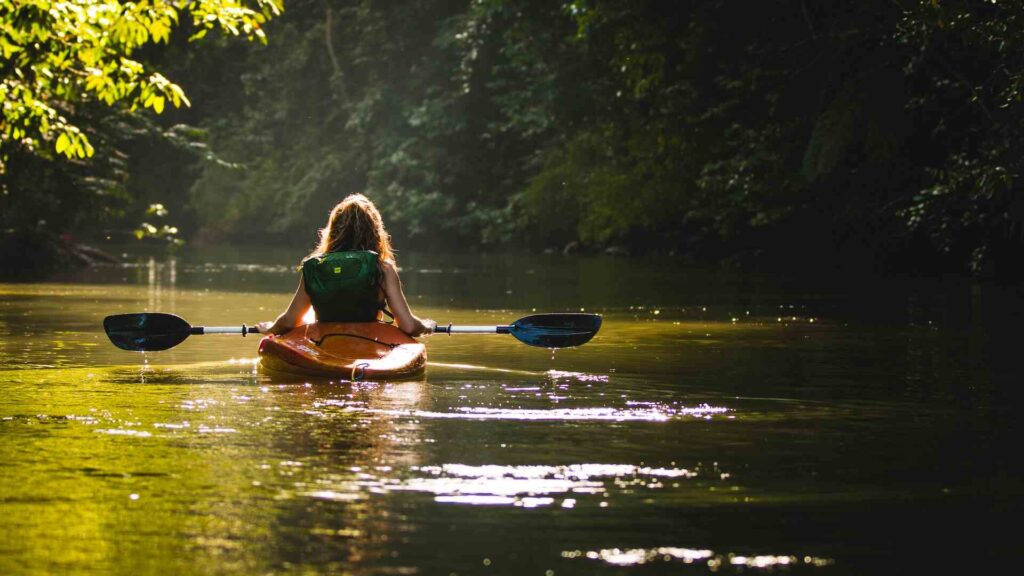
Okay, so you’ve read all this, and there’s probably still that little voice in your head going, “But wait, can kayaks actually sink for real?” Totally get it! The answer is technically yes, but don’t let that stop you.
Think of it this way – if you do the smart stuff, it’s super unlikely to happen. Here’s the checklist:
- Life vest – never leave the shore without it
- Dress for a dunking, not just the weather
- Start slow, learn the basics before tackling tougher water
If you do flip, take a breath, don’t panic, and you’ll be okay. Honestly, with a little bit of prep, you won’t even be thinking about sinking! You’ll be too busy having an amazing time on the water.
So, can a kayak sink? Yeah, technically. Is it gonna happen to you? Probably not if you’re smart about it. Now, go out there and start paddling!
Conclusion
Okay, so now you get the deal with kayaks and sinking. It can happen, but it’s way less likely if you follow a few simple tips. Here’s your safety checklist:
- Life vest = your best friend: Seriously, don’t skip this.
- Know your limits: Calm water first, work your way up.
- Dress for the water, not the weather: Cold water can mess you up, even on warm days.
- Buddy up: Paddling’s more fun with friends, and way safer.
- Tell someone your plan: If you gotta go solo, let someone know where and when.
Extra stuff that helps:
- Bilge pump: Lets you get rid of water quick.
- Flotation adds: Like backup airbags for your kayak.
- Eskimo roll: Advanced move, but lets you right a flipped kayak fast.
With this stuff in mind, you won’t even be stressing about sinking, just having a blast paddling!

